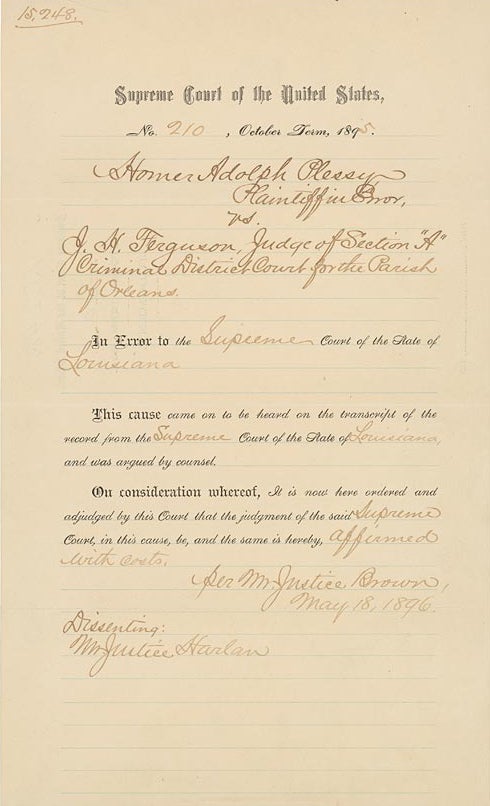Homer Plessy’s Groundbreaking Ride: On This Day, June 7
Posted by Mary Kate Kwasnik on Tuesday, 06/07/2016
On June 7, 1892, New Orleans native Homer Plessy purposely violated the Louisiana separate car law in order to bring the issue of segregation to the Supreme Court. Plessy was chosen for this action by the Comité des Citoyens—a "Citizens’ Committee" made up of white, African American, and Creole citizens in favor of civil rights—because he was ⅛ African American. He was considered white enough to board the whites-only car, and black enough to be arrested for doing so.
After boarding the car, Plessy informed the conductor of his ethnicity and was promptly arrested. The group’s lawyer, Albion Tourgee, argued that Plessy’s civil rights had been violated, as outlined in the Thirteenth and Fourteenth Amendments. The case was heard by Judge John Howard Ferguson, who ruled in favor of the state of Louisiana, arguing that the state had the right to regulate railroad companies within the state. Plessy’s case moved through the Louisiana Supreme Court and eventually arrived before the US Supreme Court in 1896, where the majority ruled in favor of, once again, the state of Louisiana.
Justice Henry Billings Brown delivered the ruling in May of 1896, concluding that separate but equal facilities were not in violation of the Constitution. Segregation, therefore, was not considered discrimination. The segregationist doctrine "separate but equal" was affirmed in the Plessy v. Ferguson ruling, effectively legalizing segregation of all public facilities. Plessy v. Ferguson was not overturned until the Brown v. Board of Education Supreme Court ruling in 1954, when the Court ruled that separate educational facilities were "inherently unequal" and, thus, unconstitutional.
